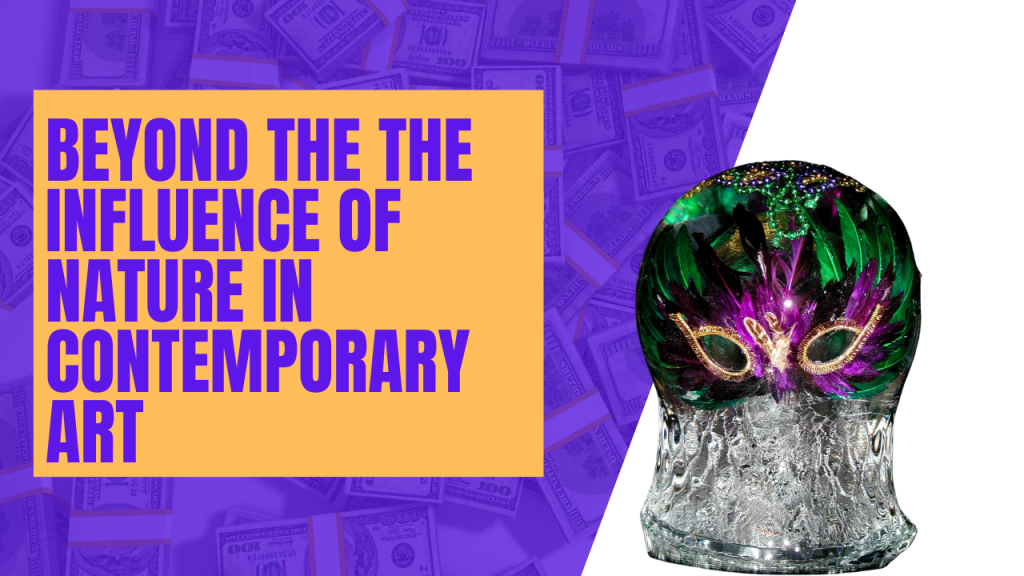
Nature has long been a wellspring of inspiration for artists throughout history, but its influence on contemporary art has taken on new dimensions. In a rapidly changing world, where environmental concerns are at the forefront of global consciousness, artists are turning to nature not just for beauty but also for commentary, reflection, and even activism. This article explores the multifaceted ways in which nature manifests in contemporary art, from traditional landscapes to eco-art and beyond.
Nature as Subject Matter
One of the most apparent ways nature influences contemporary art is through its portrayal as subject matter. Artists continue to find inspiration in landscapes, seascapes, and natural forms, creating stunning works that celebrate the beauty of the natural world. For example, the landscapes of Anselm Kiefer, with their vast, sweeping vistas and earthy colors, evoke a deep connection to nature. Kiefer’s “Palm Sunday” series, featuring expansive fields and forests, transports viewers to a world untouched by human hands.
Similarly, the work of contemporary painter Maya Lin often revolves around nature and environmental themes. Lin, known for her design of the Vietnam Veterans Memorial in Washington, D.C., creates art that reflects her deep concern for the environment. Her piece “Wavefield” is a massive earthwork that mimics the ripples of a wave, reminding viewers of the power and beauty of the natural world.
Eco-Art: Confronting Environmental Issues
In the realm of eco-art, artists are using their creativity to confront pressing environmental issues. These works go beyond mere representation of nature; they actively engage with concepts such as climate change, pollution, and conservation. Take, for instance, the work of Olafur Eliasson, whose installation “Ice Watch” brought chunks of Greenland’s icebergs to city centers, highlighting the urgency of melting polar ice caps. Viewers could touch and interact with the ice, creating a tangible connection to the distant effects of climate change.
Another powerful example is the “Straws” installation by Von Wong, which features a sea of 168,000 used plastic straws collected from a single beach. This arresting display serves as a stark reminder of the overwhelming presence of plastic pollution in our oceans. Through such works, artists are not only raising awareness but also provoking action and dialogue on environmental issues.
Biomorphic and Organic Forms
In addition to literal depictions of nature, contemporary art often incorporates biomorphic and organic forms. Artists like Louise Bourgeois and Eva Hesse create sculptures that resemble natural shapes and textures, blurring the lines between art and the natural world. Bourgeois’ “Maman,” a giant spider sculpture, embodies both maternal protection and arachnid menace, inviting viewers to contemplate their relationship with nature.
Eva Hesse’s sculptures, such as “Untitled (Rope Piece),” feature organic materials like rope and latex, arranged in sinuous, flowing forms. These works suggest a merging of the human and the natural, exploring themes of growth, decay, and transformation.
The influence of nature in contemporary art is as diverse and dynamic as the natural world itself. From traditional landscapes to eco-art and biomorphic forms, artists are continually finding new ways to engage with and interpret nature. Through their work, they not only celebrate the beauty of the environment but also confront pressing environmental issues, prompting viewers to consider their relationship with the world around them.
As we navigate an era marked by climate change and ecological challenges, the role of art becomes increasingly significant. Artists serve as visual storytellers, advocates, and catalysts for change, using their creativity to inspire reflection, raise awareness, and spark action. In the fusion of art and nature, we find a powerful source of inspiration and a call to preserve and protect the planet for generations to come.